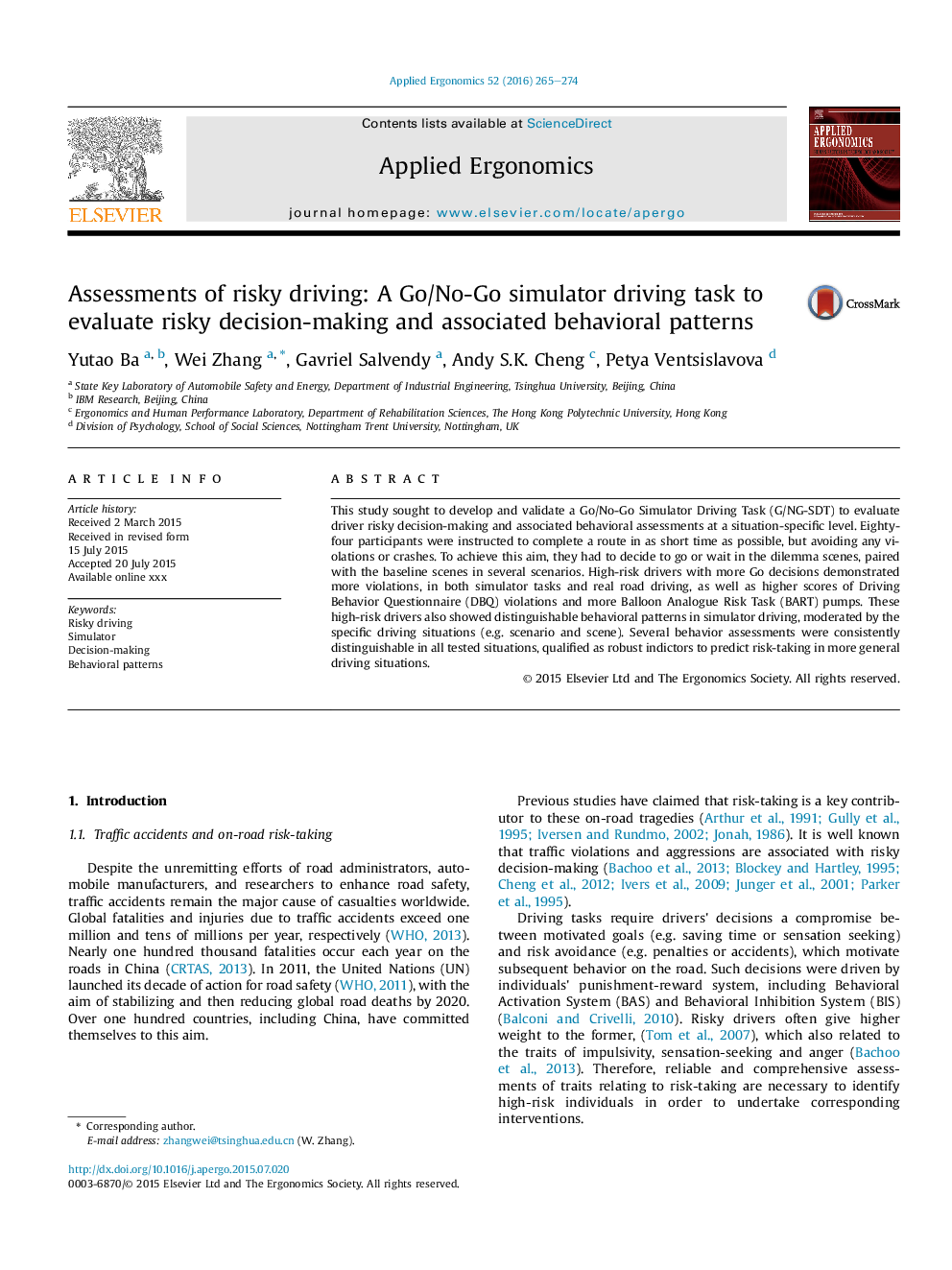| Article ID | Journal | Published Year | Pages | File Type |
|---|---|---|---|---|
| 6947941 | Applied Ergonomics | 2016 | 10 Pages |
Abstract
This study sought to develop and validate a Go/No-Go Simulator Driving Task (G/NG-SDT) to evaluate driver risky decision-making and associated behavioral assessments at a situation-specific level. Eighty-four participants were instructed to complete a route in as short time as possible, but avoiding any violations or crashes. To achieve this aim, they had to decide to go or wait in the dilemma scenes, paired with the baseline scenes in several scenarios. High-risk drivers with more Go decisions demonstrated more violations, in both simulator tasks and real road driving, as well as higher scores of Driving Behavior Questionnaire (DBQ) violations and more Balloon Analogue Risk Task (BART) pumps. These high-risk drivers also showed distinguishable behavioral patterns in simulator driving, moderated by the specific driving situations (e.g. scenario and scene). Several behavior assessments were consistently distinguishable in all tested situations, qualified as robust indictors to predict risk-taking in more general driving situations.
Related Topics
Physical Sciences and Engineering
Computer Science
Human-Computer Interaction
Authors
Yutao Ba, Wei Zhang, Gavriel Salvendy, Andy S.K. Cheng, Petya Ventsislavova,
